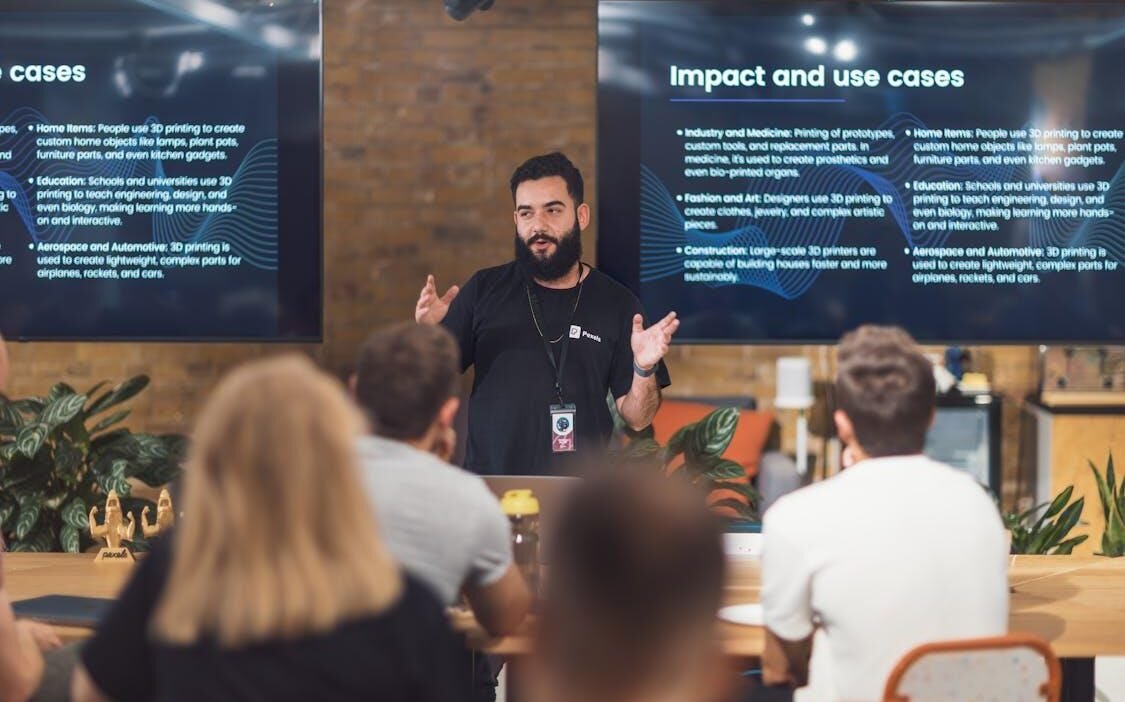Project and program leadership is not a role that stands still. Expectations shift quickly, industries adopt new frameworks, and stakeholders look for results that are both consistent and forward-thinking. Leaders who stop learning risk falling behind, while those who keep updating their skills are better equipped to guide teams and deliver outcomes.
Continuous learning is about more than professional development courses. It represents a commitment to staying relevant and capable in a world where technology and business strategies change at a rapid pace. For organisations, supporting leaders through structured learning opportunities helps build resilience, improve results, and create a culture where growth is valued.
Partnering with the Experts
One of the strongest ways organisations can support leadership development is through partnerships with training providers. Internal training programs are useful, but external experts often bring broader perspectives, global standards, and practical methods that leaders can immediately apply. These partnerships also save time, since they provide ready-made pathways for upskilling without requiring companies to create programs from scratch.
Nowadays, organisations often turn to trusted experts for this type of support. HiLogic is one example, offering courses that help leaders and teams build knowledge in project, program, and portfolio management. Working with a provider like this gives leaders access to expert-led sessions that are designed to keep skills current.
Aligning With Global Standards
Project and program leadership is rarely limited to local frameworks. Many industries use international standards, which means leaders need to be familiar with approaches recognised across borders. Keeping methods aligned with these standards builds credibility when working with global partners or clients. It also creates consistency, so teams know that their leaders are applying widely accepted practices rather than outdated methods.
Ongoing learning helps leaders stay updated as global standards evolve. Frameworks like PRINCE2 or MSP, for example, have regular updates that reflect changes in how projects are managed around the world.
Handling Complex Stakeholder Demands
Modern projects often involve multiple stakeholders with different priorities. Leaders are expected to balance these demands while still keeping projects on track. Continuous learning gives leaders the tools to manage such situations with confidence. Training in negotiation, conflict management, and stakeholder engagement prepares them to navigate conversations that could otherwise slow down progress.
Stakeholders are more likely to trust leaders who can explain trade-offs clearly and offer solutions that feel fair to everyone involved. When leaders invest in developing these skills, they can step into complex discussions without hesitation.
Strengthening Team Communication
Communication is one of the most important skills in leadership. Projects bring together people from different backgrounds, professions, and sometimes cultures. Continuous learning helps leaders refine how they communicate with such diverse groups. Training in areas like active listening, concise messaging, and cross-cultural communication supports stronger collaboration and reduces misunderstandings.
Good communication also shapes the culture of the team. Leaders who learn how to share information clearly create environments where team members feel informed and valued.
Learning New Tools and Platforms
Technology is central to project and program work, and the tools used to manage schedules, budgets, and reporting are constantly changing. Leaders who stay updated on the latest platforms can guide their teams with more confidence. Continuous learning gives them the chance to practise using these tools in a structured setting rather than trying to figure them out under pressure.
When leaders are comfortable with new platforms, their teams follow their lead. It sets the standard that staying current is part of the job, not an extra task.
Sharpening Decision-Making
Every project involves critical decisions, from choosing priorities to allocating resources. Continuous learning helps leaders refine their judgment by exposing them to case studies, simulations, and new frameworks for thinking.
Leaders who keep their decision-making skills sharp often create more consistent results. Their choices are informed by the latest insights rather than habits or assumptions. As a result, this leads to smoother delivery and stronger trust from both teams and stakeholders.
Collaborating Across Disciplines
Projects rarely involve just one type of expertise. Engineers, analysts, designers, and managers often have to work together, which can create challenges if leaders aren’t prepared. Continuous learning provides strategies for coordinating across different fields and encourages leaders to understand how each discipline contributes to the overall goal.
Collaboration becomes easier when leaders have training in facilitation and cross-functional teamwork. Instead of friction, the team develops a shared sense of purpose.
Inspiring Innovation
Leaders who commit to ongoing learning are more likely to encourage innovation within their teams. Training sessions, workshops, and seminars often introduce fresh ways of approaching problems that can be applied back in the workplace.
When leaders demonstrate curiosity and openness to new ideas, their teams take notice. This attitude builds a culture where people feel safe suggesting alternatives or experimenting with different approaches. Innovation often comes from this willingness to explore beyond routine ways of working.
Refining Efficiency
Efficiency in project work is about finding ways to deliver quality results without wasting resources. Continuous learning supports this by introducing leaders to proven techniques and updated processes. Each training experience adds new tools for identifying bottlenecks and streamlining workflows.
As leaders apply these lessons, projects move forward with fewer delays and less duplication of effort. Teams also benefit, since they can see their work producing results more directly.
Leading Global Projects
Work no longer stops at national borders. Many organisations take part in projects that stretch across countries and cultures. Continuous learning helps leaders prepare for the expectations that come with international collaboration. Training often covers global frameworks as well as cultural awareness, both of which are critical for leading diverse teams.
Leaders who are prepared for global projects are better at managing time zones, communication differences, and regulatory requirements. Their ability to adapt makes them valuable to organisations that want to operate internationally.
Aligning with Business Strategy
Projects succeed when they support broader organisational goals. Continuous learning gives leaders the ability to connect project objectives with the bigger picture. Training often includes strategic planning, business case development, and methods for evaluating long-term outcomes.
This alignment ensures that resources are directed towards the right initiatives. Leaders who link projects with business strategy show that they understand the role of their work in the organisation’s future.
Building a Culture of Adaptability
The habits of leaders often set the tone for their teams. When leaders commit to continuous learning, they model adaptability and openness to change. Teams that see this example are more likely to embrace new methods, tools, and expectations without resistance.
As such, this creates a culture where learning is seen as part of the job rather than an extra task. In fast-changing industries, that adaptability keeps organisations ready to handle challenges and opportunities with confidence.
Continuous learning is no longer optional for project and program leaders. It shapes how they handle stakeholders, adapt to new tools, make decisions, and lead diverse teams. When leaders commit to learning, they create benefits that flow through entire organisations.



